A few Fido features often leave us humans scratching our heads, especially dewclaws – dangling extra toes and claws that are positioned higher on the leg than other toes.
While all dog breeds have dewclaws on their front paws, some puppers have them on their rear legs, too, adding to the mystery.
Below, we’ll identify dog breeds that have rear dewclaws and explain their purpose and care.
What Are Dewclaws?
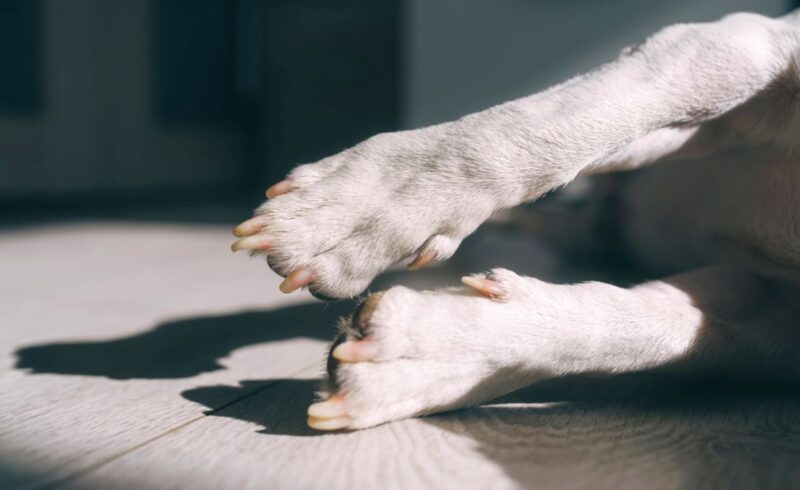
Dewclaws are “extra” digits dogs have.
They’re essentially the doggy version of thumbs, though they do have a few key differences.
For starters, dewclaws are situated farther from your dog’s other toes than your thumb is located from your non-thumb fingers.
Additionally, while they are connected to muscles in the lower limb like human thumbs are (dogs actually have one more tendon in this area than humans do), dewclaws aren’t opposable like human thumbs are.
Some dogs even have two declaws on a single foot! Humans occasionally exhibit thumb duplication (the human equivalent of double dewclaws), but it’s rare.
And obviously, given the topic we’re discussing today, in addition to front dewclaws, some dogs even have dewclaws on their hind legs too.
Where Are My Dog’s Dewclaws? Are Dewclaws Ever Removed?

Don’t see dewclaws on your dog’s front legs? No need to worry. Not all dogs have them (even if they’re all typically born with them).
Breeders often remove dewclaws when puppies are a few days old to meet the breed standard or to prevent future injury. Unfortunately, while quirky and cute, dewclaws can be a pain – literally. These extra digits’ location makes them susceptible to snagging on brush, blankets, and more, which can cause injuries.
Rear dewclaws are especially prone to problems, as they lack the tendons and overall connectivity of front dewclaws. If injured, they’ll simply dangle there like little pinatas of pain.
Why Do Dogs Have Dewclaws?
We know what you’re thinking: So if dewclaws are ouch magnets, why do dogs have them?
Think of dewclaws like human wisdom teeth – they are “vestigial” structures, which used to be useful, but they aren’t really necessary anymore.
These extra doggo digits are leftover features from an animal called Miacis — an early ancestor of modern dogs, who lived around 40 to 60 million years ago. These little carnivores relied on their dewclaws to climb trees.
The dewclaws of these floofy critters were located lower on the paw than they are in modern dogs, similar to how close our thumb is to our fingers. But as dewclaws stopped being necessary for climbing and started getting in the way of running fast, the dewclaw moved up the limb.
Even with the somewhat awkward position of today’s dog dewclaws, some canines still use them for extra traction when navigating obstacles, whether hiking rocky terrain or flying over the agility dogwalk. Dewclaws also improve your pup’s grip on his favorite chews while nommin’ away.
Still, there’s no need to worry if your pup doesn’t have dewclaws. He’s not missing out on an essential feature. Instead, he’s less likely to injure himself, which is always a win.
36 Breeds with Rear Dewclaws
Ready to see which woofs have an extra toe bean or two around the back? The list includes familiar faces and rare Rovers alike. Check out these toetally awesome doggos.
1. German Shepherd
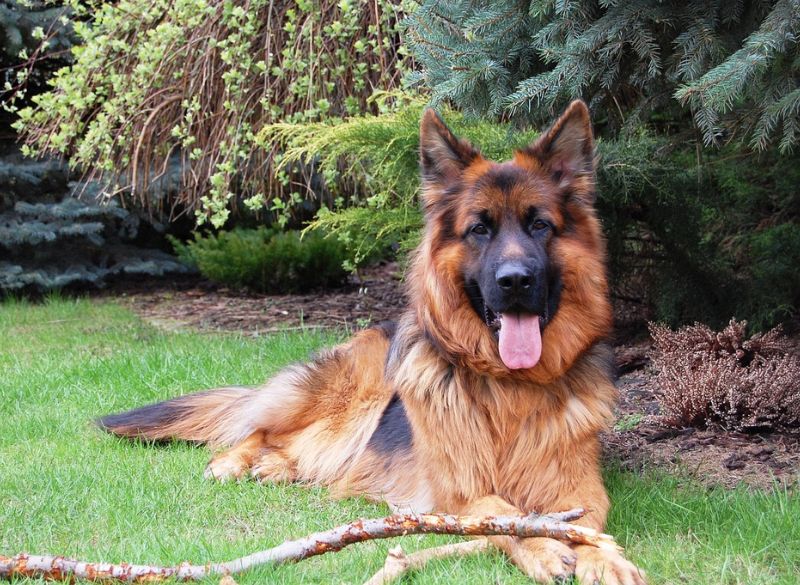
Surprise! This popular pupperino has rear dewclaws, though the AKC breed standard calls for them to be removed. Originally tasked with herding livestock, this pointed-eared pup stars in roles ranging from service dog to police pooch, aided by his intelligence, loyalty, and athleticism. Most of the time, there’s no obstacle he’s not willing to overcome!
The German shepherd is not ideal if you’re seeking a couch potato. Daily vigorous physical and mental exercises are musts, especially those involving one-on-one time with his favorite humans, as this hardworking handsome is also a Velcro breed. Look into canine sports for this cutie, including agility, Schutzhund, and obedience.
Can’t get enough of this German gent? Browse some German shepherd mixes.
2. Golden Retriever

While uncommon, the golden can have rear dewclaws, though many breeders remove them. Rear dewclaws may snag in the field, leading to injury, so removal often makes sense for goldens, who frequently retrieve downed fowl during hunts. Keeping all of your golden’s nails trimmed is a must, along with brushing his Fabio-esque locks a few times weekly to prevent mats.
Like the German gent above, the golden often serves as man’s right-hand Rover, shining as a seeing-eye pup, search-and-rescue Rover, and more. He’s one of the easiest breeds to train and exceptionally gentle yet playful, making him a good match for busy families. Just be sure you have enough time to devote to this legendary lovebug. He demands all the lovins!
3. Beauceron

Here’s a surprise: The Beauceron’s AKC breed standard calls for two dewclaws on each hind leg. If you’re wondering what a Beauceron is, you’re not alone, as this French Fido is far from the most popular dog breed in the U.S. This ancient farm dog is often mixed up with a dog breed he was used to develop: the Doberman pinscher.
The Beauceron is a large, powerful pup, often exceeding 100 pounds and prone to mouthiness, making early and ongoing obedience training and socialization vital in shaping him into his best self. Stick to reward-based training with lots of praise since aversive “methods” will not work with him. This is not a pup for beginners. He needs an experienced, confident handler.
4. Briard
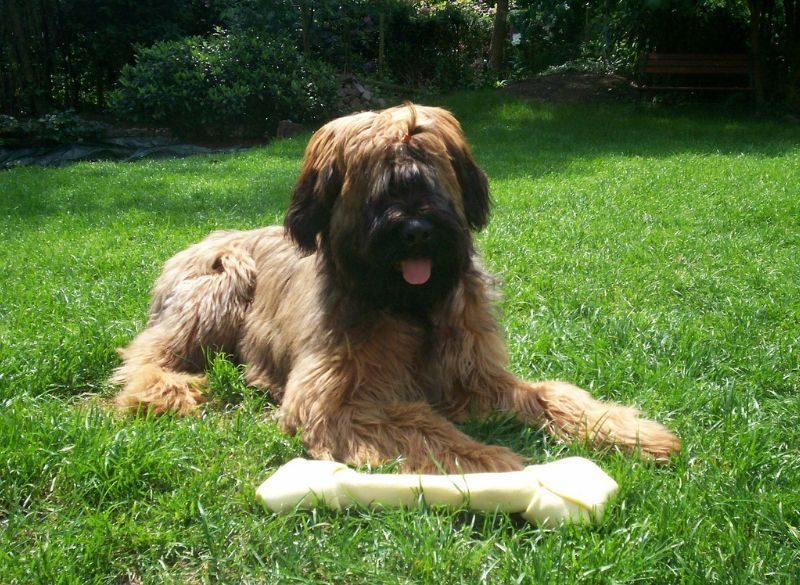
The Briard is another dog breed whose AKC standard demands dual dewclaws on each hind leg. Show dogs aren’t penalized for missing a dewclaw nail if one breaks, so long as the missing nail’s digit remains in place. In addition to trimming his nails regularly, you’ll want to brush out your Briard’s long coat a few times weekly to remove tangles.
Most people haven’t heard of this handsome herder, which is a real shame, given his intelligence and hardworking ways. Don’t confuse this smart pupper for one who’s easy to train; this livestock wrangler is one independent thinker. He needs an experienced owner prepared to mix up training sessions, as holding this hairy herding dog’s attention isn’t easy.
5. Finnish Lapphund
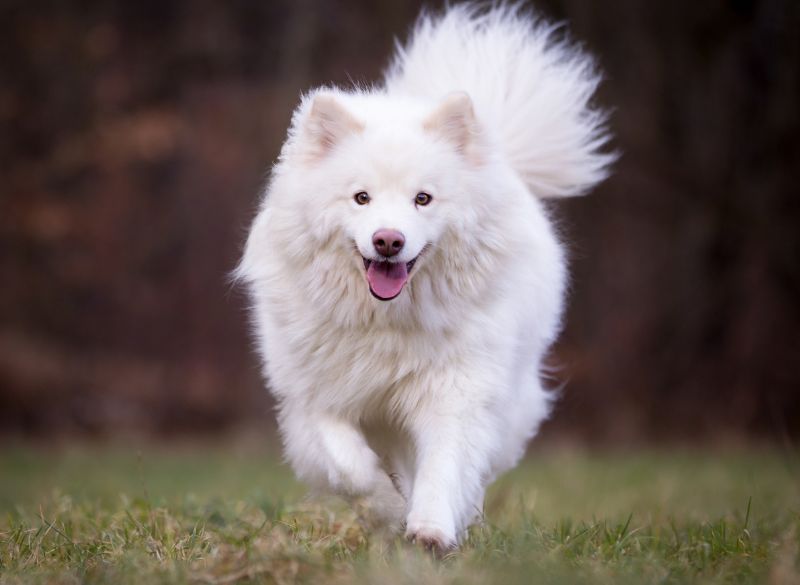
Some of these medium-sized fuzzy friends have rear dewclaws, though good luck spotting them at a glance under his mountain of majestic hair. Take special care not to snag his dewclaws in a brush during his weekly comb-outs – an essential grooming routine to cut down on shedding fur.
Originally from the Arctic Circle, this adorable doggo began with an equally adorable-sounding yet dangerous job: reindeer herding! He’s smart, happy to please, and active, making him a good choice for those interested in a cute canine athlete poised to perfect agility, obedience, and beyond.
6. Spinone Italiano
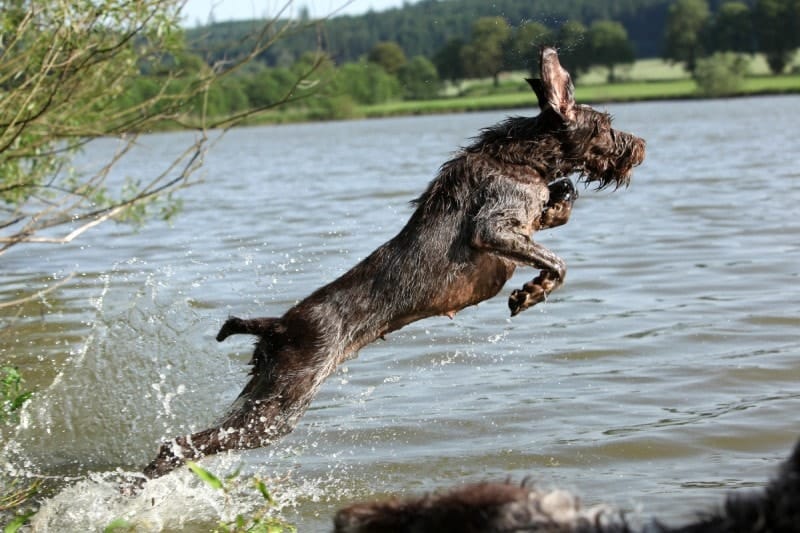
Rear claws are sometimes found on this handsome hunter, prized for his intelligence and work ethic. He loves venturing into the field to sniff out or retrieve birds. Not a hunter? No big deal! Walk your woof somewhere he hasn’t been, and watch him go wild as he takes in the new scents.
High-value treats like hot dog bits help move mountains when training this canine since he’s known to be stubborn. Avoiding harsh methods is essential in molding him into a well-behaved doggo, as this pup is sensitive.
7. Norwegian Buhund
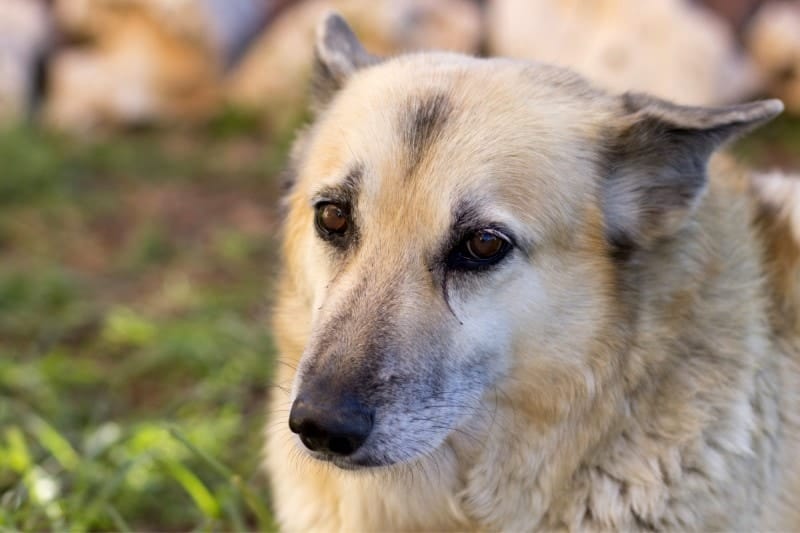
This perky-eared pup may rock single or double rear dewclaws. Like any doggo, regular nail trims, ear cleaning, and toothbrushing are musts, along with brushing a few times weekly to remove shedding hair. This furball sheds year-round but loses much more fur when he “blows” his undercoat twice annually. If you can’t handle hair around the house, he’s not an ideal match.
“Buhund” translates to “homestead dog” or “farm dog,” a fitting name for this Jack-of-all-trades floof who once served as a herder, guard dog, and companion to Vikings. He’s affectionate with his family but cautious with strangers, keen to keep a close eye for threats, including squirrels. This can lead to nuisance barking, so work on obedience training and providing plenty of canine enrichment activities to prevent issues.
8. Basenji
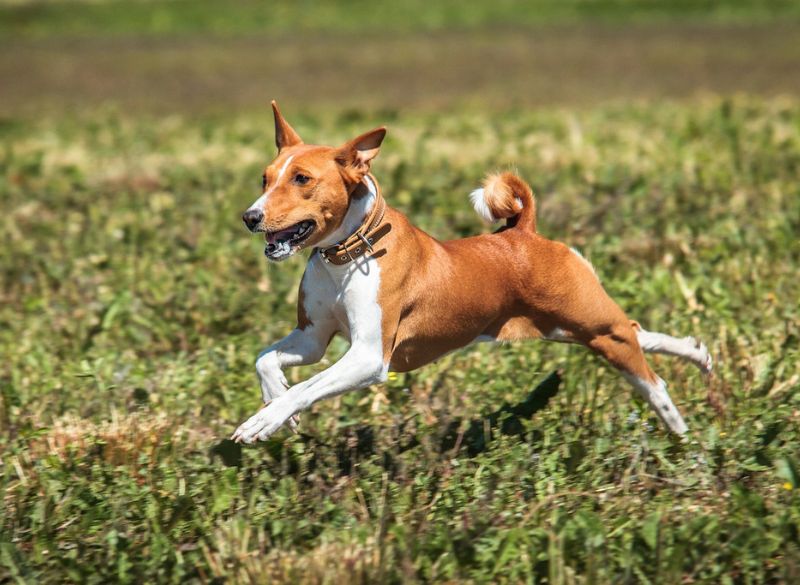
The basenji can have hind dewclaws, though breeders usually remove both front and rear ones to prevent accidental ouchies. Considering this African breed’s love of running and adventure, a dewclaw oopsie is a real possibility. If your basenji’s dewclaws remain in place (be they on the front or hind leg), keep them clipped short to avoid incidents.
This curly-tailed cutie sure is adorable, but don’t be mistaken: He has a high prey drive that makes walking him on a leash at all times a must – no matter how much training he’s mastered. He’ll give chase to any perceived prey item and ignore commands. Luckily, this natural love of the chase can be funneled constructively into canine sports like lure coursing.
9. Catalonian Sheepdog
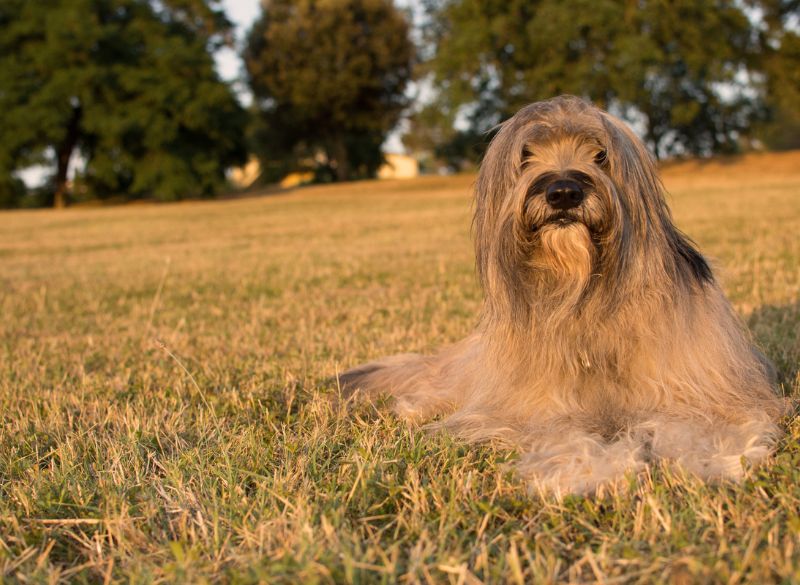
The UKC standard calls for two dewclaws on this farm dog’s hind legs. Along with trimming these extra nails, this long-haired cutie needs near-daily brushing to prevent mats. If you’re not ready to roll up your elbows and groom, he’s not a good match.
This shaggy sheepdog requires an experienced owner prepared for ongoing obedience training and socialization work, as he can be strong-willed and aloof with strangers. Bred to look after sheep independently, he won’t look to humans for guidance. Instead, this pup will solve problems on his own.
10. Pyrenean Shepherd
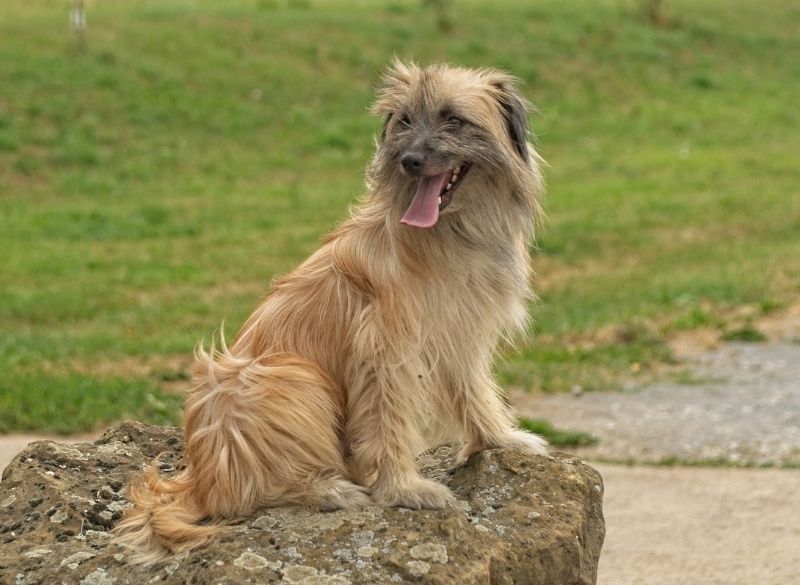
This petite herder can have single or double hind dewclaws, though some don’t have any! No matter his dewclaw look, this little wonder woof needs regular nail trims and weekly brushing to manage his doggy ‘do, which sheds a fair amount. Don’t clip this cutie’s coat: The scruffy top layer repels the elements while the softer undercoat keeps him warm.
While his name is easy to confuse with the great Pyrenees, this small shepherd might as well be the opposite in appearance and personality. Weighing a maximum of 30 pounds, this compact canine is energetic, friendly, and eager to please. He’s a team player, too, originally working alongside his Pyr pal to herd the sheep while the much larger Pyr stood guard.
11. Saint Bernard

This jolly giant can have rear dewclaws, even if the AKC breed standard deems them “not desired.” Dewclaws or not, this colossal canine is one lovey-dovey doggo, which, paired with his playfulness, makes the Saint Bernard an excellent choice for families with older kiddos. While he can be gentle, at well over 100 pounds, he’s just too big to have around toddlers that may go airborne courtesy of a tail wag gone awry.
As one of the largest dog breeds, your Saint Bernard must begin obedience training and socialization early in puppyhood to master the basics before he’s too big to handle. You’ll also need to brush him weekly, whether he’s a long- or short-haired Saint. Another not-so-fun-side of life with this pooch? Drool. Keep a slobber towel handy!
12. Norwegian Lundehund

This neat Norwegian pup has multiple rear dewclaws and extra toes, too. Another cool feature is his super flexible neck, which can bend back to touch his head to his spine. Like other spitz breeds, he also has pricked ears, a curled tail, and a plush coat, though he is on the petite side, maxing out at 18 pounds. That said, the lundehund is a small dog breed with a big-time love of adventure!
“Lundehund” translates to “puffin dog,” an homage to the breed’s original purpose: aiding in puffin hunts. His working roots remain, as he’s an energetic little guy requiring daily physical and mental exercise. Keep his toy bin well-stocked, but also engage in one-on-one fun, such as rounds of fetch or hiking a new trail.
13. Icelandic Sheepdog
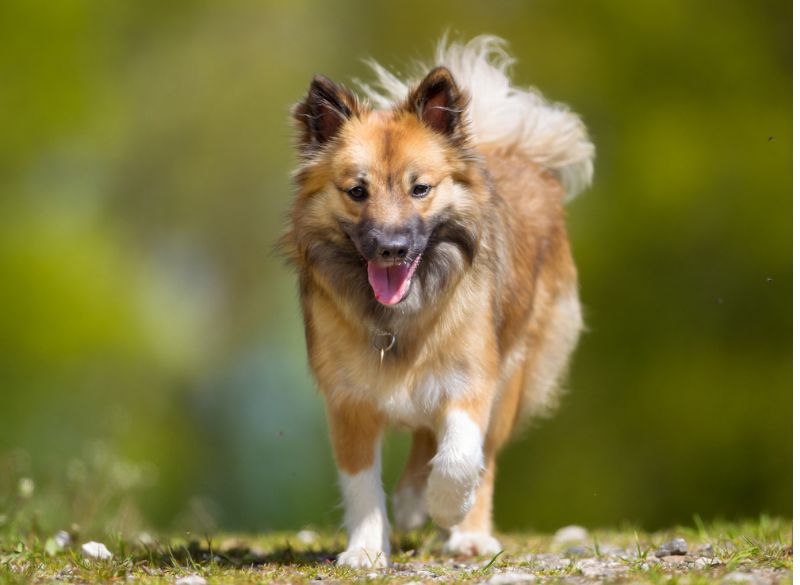
This sniffer’s standard calls for rear dewclaws, with double dewclaws being preferred. Clip all his nails regularly and invest in a solid vacuum, as the Icelandic sheepdog is a super shedder year-round, especially when he “blows” his coat twice yearly. A brush for heavy-shedding breeds is essential in tackling this hairy hurricane!
This sugary-sweet sheepdog is intelligent and hungry for praise, making him one of the easier spitzes to train. With that in mind, training methods must be positive since he is sensitive. As a people lover, he also needs lots of daily bonding time. If you work long hours away from home, he’s not the pupper for you.
14. Spanish Mastiff

A jowly gentleman, the Spanish mastiff may have rear dewclaws, with some of these sniffers even rocking a double dewclaw around back! A good nail clipper is necessary for tackling these talons, as he has some jumbo nails! His medium-length coat comes in five colors, ranging from fawn to wolfgray. Aside from the occasional bath, a weekly brushing to clear away dirt and debris is all he needs, making him a relatively easy keeper in the grooming department.
Tipping the scales at up to 200 pounds, this mega molosser requires an experienced dog owner committed to lifelong obedience training and socialization starting in puppyhood. The Spanish mastiff is strong in body and mind, needing a leader dedicated to shaping him into the best buddy possible.
15. Estrela Mountain Dog
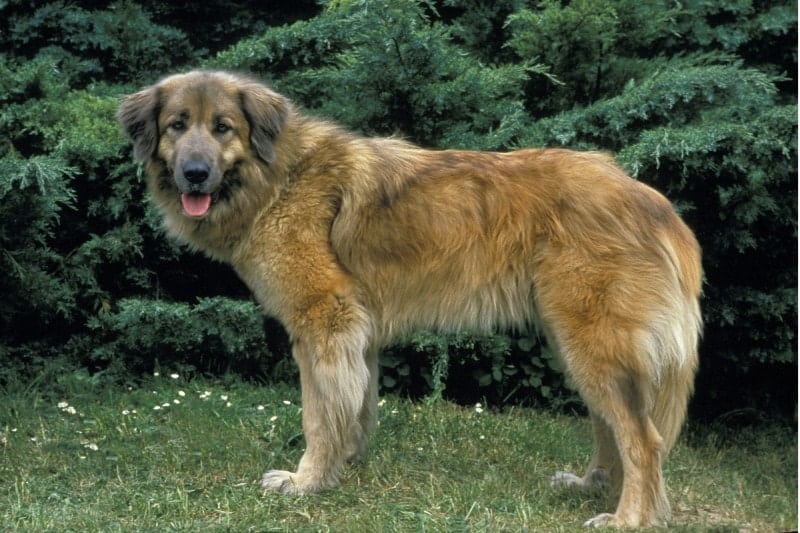
This Portuguese pupper may have hind dewclaws, though it might be challenging to find them to trim under all his fuzz. Weekly brushing of this thick coat is vital in helping him look and feel his best and keeping fur piles around your home at bay.
The Estrela can be a great match for families with kiddos, but as a livestock guardian, he’s wary of strangers, so playdates may be best outside the home. Socializing him early is important, along with mastering obedience basics while he’s still small enough to handle as a puppy. Employ reward-based methods and have a bit of patience to unlock his full potential.
16. Terceira Cattle Dog
This Portuguese pooch is also known as the barbado da Terceira, referring to the island of Terceira. As for “barbado,” that means “bearded one.” Adorable, right? First tasked with herding cattle and guarding livestock, this multi-talented cutie sometimes has rear dewclaws.
Relatively new in the U.S., the first of these canines arrived stateside in 2018. He’s smart, friendly, and naturally athletic, but he’s still best matched with an experienced owner, as his herding instincts may lead to nuisance nipping and rounding up children and other pets. This cattle dog is also sensitive, requiring consistent training with plenty of praise to build his confidence.
17. Catahoula Leopard Dog
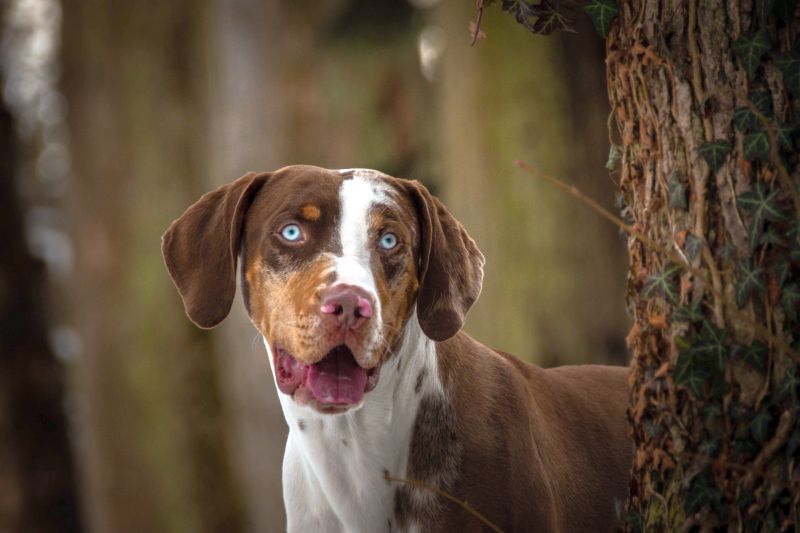
The Catahoula may have rear dewclaws – one of many cool quirks about this eye-catching breed. He comes in a rainbow of colors and patterns, including merle. He may also inherit striking blue eyes or be a combo canine with one blue and one brown eye.
This all-American sweetheart originated in Louisiana, where he remains common today. He’s a working pup, too, earning his keep from the start as a catch dog while settlers wrangled feral hogs and cows across the South. He remains a prized pooch in this role today, with these instincts strong in the breed. Daily exercise is vital to this breed’s success as a canine companion. He needs a job to do, or he will become destructive.
Can’t get enough Catahoula? Browse some Catahoula leopard dog mixes.
18. Anatolian Shepherd

The Anatolian stands up to 29 inches at the shoulder and clocks in north of 100 pounds. This larger-than-life livestock guardian has rear dewclaws, with some rocking the double rear dewclaw look. He’s a no-frills floof with a shorter coat, but he can still handle cold weather just fine, thanks to his dense undercoat.
Courage comes naturally to this pooch, as he was bred to protect livestock against fearsome predators. These roots also mean he’s independent and always on watch against perceived threats, which makes handling him challenging. Because of this, he’s best matched with experienced owners devoted to early and ongoing obedience training and socialization.
19. Great Pyrenees
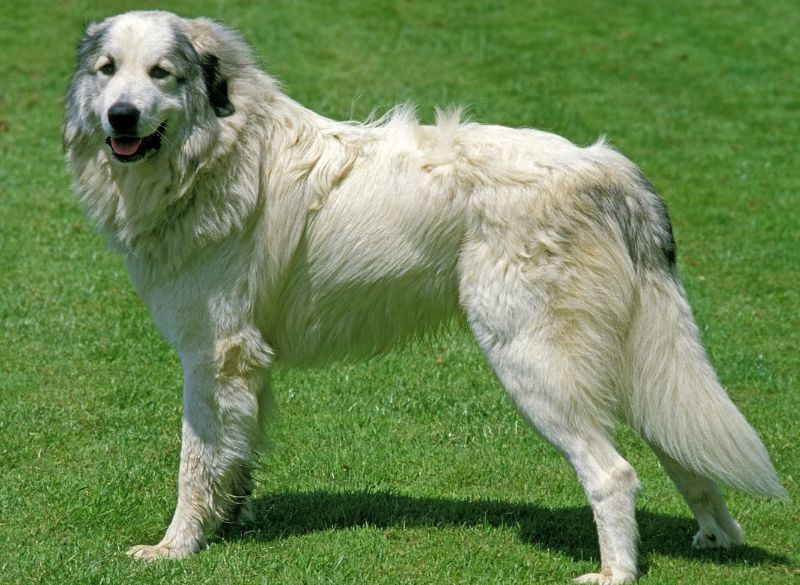
The AKC breed standard for this whopper of a white dog breed calls for double dewclaw on each rear leg. His plush coat may only come in a white base, but he can have one of four cool markings: badger, tan, gray, and reddish brown. However, all that hair requires some upkeep, with this breed being a big-time shedder. Invest in a quality brush and set aside time weekly to remove loose fuzz.
Also called the Pyr, this flock protector is affectionate with his family but will take time to warm up to strangers. He’s also one tricky dog to train, often finding human commands unworthy of consideration. Start obedience training early, maintain your patience, and pile on the praise and treats to see success.
Check out our picks for the best dog food for great Pyrenees.
20. Pyrenean Mastiff

Rear dewclaws are common in this massive pup, including double rear dewclaws. He’s similar in name to the great Pyrenees and Pyrenean shepherd, and he’s pretty close to the great Pyr in appearance. Except that he’s even larger; he sometimes approaches 190 pounds in weight.
Interestingly, the Pyrenean mastiff originated on the Spanish slopes of the Pyrenees Mountains, as opposed to the great Pyr, who hails from the French side.
This jumbo-sized gent got his start protecting livestock against predators, instilling a strong instinct to guard the family, home, and even other pets in the breed. Having this pooch in your pack requires a lifelong commitment to obedience training and socialization, starting in puppyhood. You’ll also need to set aside ample time to brush him weekly and to clean up the tufts of hair he’ll leave all over the house.
21. Puli

This Hungarian sheep herder sometimes has rear dewclaws. One of the neatest things about this breed is the array of ways in which his coat can be maintained – his coat may be kept clipped short, corded, or brushed. Regardless of coat style, regular upkeep is necessary, including skin checks for signs of irritation.
Daily exercise is a must for this precious pupper, ideally in a way that flexes his muscles and mental chops alike. He’s a good candidate for canine sports like agility, but be warned: He isn’t always the easiest to train. This strong-minded mutt will occasionally tune out lessons, making a stacked treat pouch your new best friend.
22. Belgian Laekenois
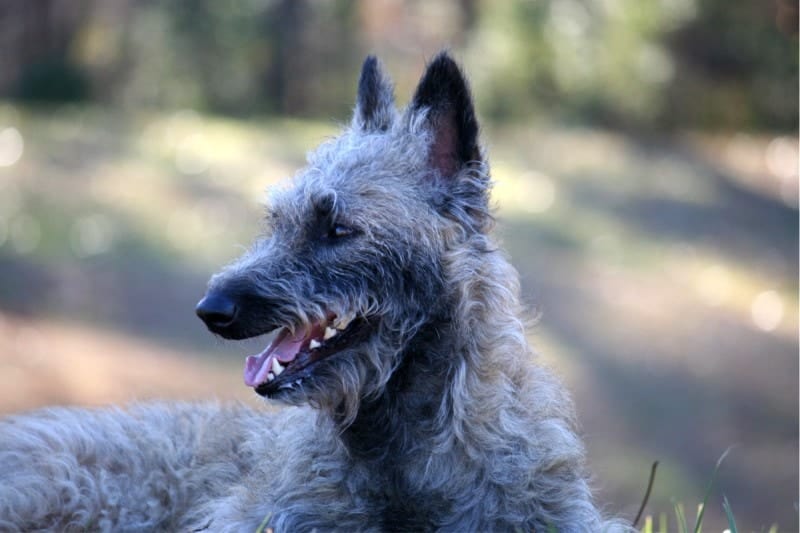
This exceptionally rare pup may have rear dewclaws, but the AKC standard calls for their removal. If they remain in place, you’ll need to keep them short, as this rough-and-tumble working woof can snag them as he conquers each new job you toss his way. Daily jobs and other physical and mental Olympics are critical for this critter, as his high energy and intelligence demand outlets.
The Laekenois can be a joy to train at times, as he catches onto new commands quickly, but he can also be a handful, with too much repetition leaving him frustrated and disinterested. Stock up on high-value treats and opt for shorter training sessions to help him succeed.
23. Bergamasco Sheepdog

This corded cutie may have rear dewclaws that need trimming to prevent them from snagging while he zips around. The other obvious grooming need is his coat, though once corded around age one, there isn’t much work aside from bathing him a few times yearly. Just be sure to check his skin for irritation regularly.
This Italian doggo is rare in the U.S., so don’t expect to see one at the dog park. Having one may also mean forever explaining his unique coat to passersby who’re concerned that he’s matted – a prospect that may leave introverts and other owners running for the hills.
24. Belgian Malinois
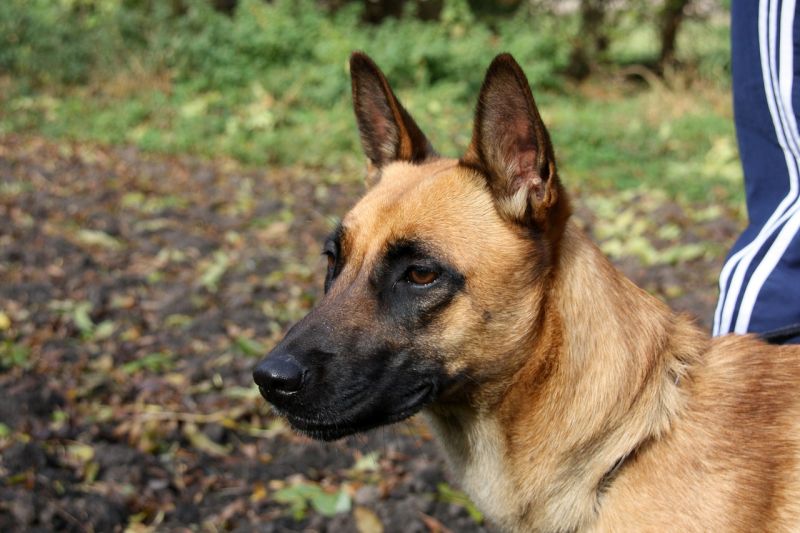
This Belgian beau sometimes has rear dewclaws despite the AKC breed standard calling for none. These extra toes may give this hard-working canine more grip while he takes on new adventures, but they can pose an injury risk, given his rough-and-tumble ways.
With his need for vigorous daily physical and mental exercise, the Belgian malinois is one of the worst dog breeds for beginner owners. His exercise needs are downright exhausting, and he demands multiple jogs (or similar) daily, paired with brain-buzzing activities, whether mastering new tricks in training, sniffing out hidden toys, or blazing through an agility course.
25. Pumi

A Hungarian herder, the pumi may have rear dewclaws, though the real star is his adorably flopped ears. His plush coat and friendly expression make him more like the Snuggle Bear come to life than most people’s idea of a hard working farm dog.
Brainy and bouncy, the pumi has steep daily exercise demands despite his smaller stature. He’s every bit a big dog in a small package, happy to join along on long hikes and jogs. Be sure to mix brain games into these activities to wear him out mentally, as this smart cookie’s noggin also needs a workout.
26. Belgian Sheepdog
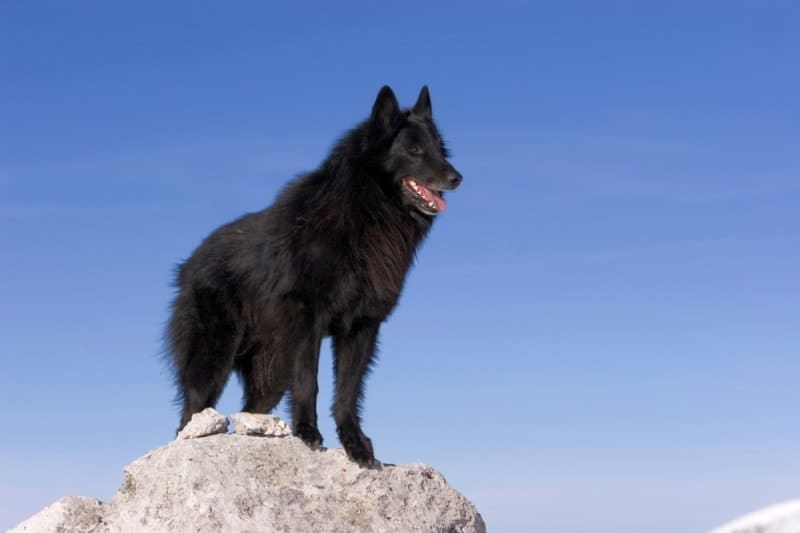
While rare, some Belgian sheepdogs can rear dewclaws, even if the AKC standard says they should be removed. This is a decision between you and your vet, though most breeders opt to remove them before puppies go home with new families, leaving you without input.
A herder by nature, this doggo needs a job, or he’ll make his own fun – likely in mischievous ways. This doesn’t mean you need sheep for him to herd, but daily exercise is necessary, preferably combining physical and mental tasks to wear him out. Jogging, hiking, and canine sports are ideal.
27. Vizsla

An energy-packed pointer, the vizsla sometimes has rear dewclaws, though many pet parents opt to remove them to prevent injury during this doggo’s daily shenanigans. His playfulness and affectionate ways make him a natural fit in families with small kiddos, and as an added bonus, kids can help wear this high-octane woofer out through fetch and other games.
Training a vizsla starts with nailing the basics: sit, down, stay, and loose leash walking. From there, you can kick up the difficulty for this brainy buddy and consider tricks or canine sports like dock diving and agility.
28. Bouvier des Flandres
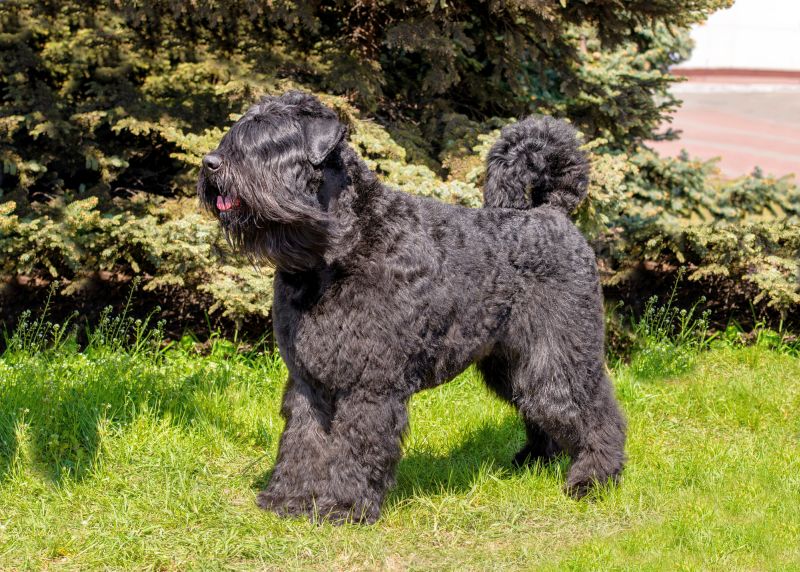
This sizeable Belgian barker can be born with rear dewclaws, though the AKC breed standard states they should be removed. Rear dewclaws or not, this bearded buddy has a unique appearance you can’t help but admire. Brushing him out two or three times a week helps ensure he stays extra handsome, along with beard wipedowns to remove leftover food and other debris.
With a maximum weight exceeding 100 pounds, it’s vital to start training your bouvier early. Thankfully, he’s one smart cookie and forever seeking praise, which makes mastering obedience basics a breeze. However, he’s still a working breed at heart, so ensure he has ample daily physical and mental exercise.
29. Bracco Italiano
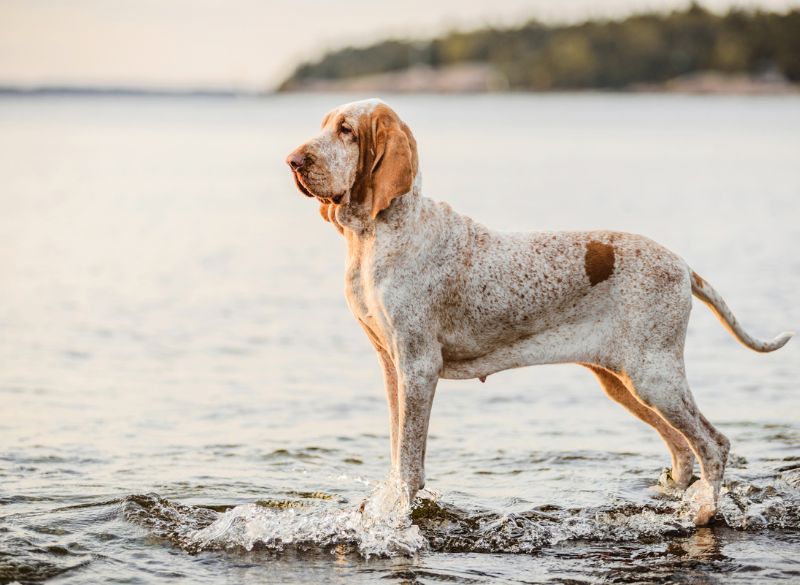
This peppy pointer has rear dewclaws and, in some cases, a double set. A short-coated canine, grooming him is a breeze. Just bathe and brush your bracco occasionally, and stick to a schedule of regular nail trims, ear cleanings, and toothbrushing to maintain optimal appearance and health.
A hunter at heart, the bracco needs daily exercise. Jogging and hiking are great outlets, especially if they involve exploring new scents, flushing birds from brush, or pointing out game safely on a long leash.
30. Belgian Tervuren
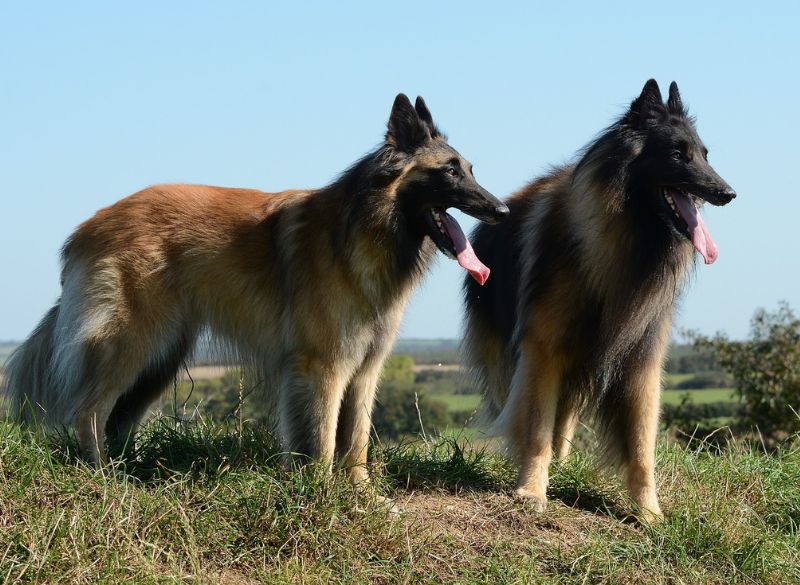
Rear dewclaws occasionally pop up on this Belgian buddy, but the AKC breed standard does call for removal. Another demand of the standard? Either a fawn and black coat or a mahogany and black coat. Speaking of coats, his is on the shaggier side, needing a rake through a few times weekly to strip away loose hair and debris.
A quick wit and a love of making his owner happy help in training, though keeping such a hardworking herder adequately exercised and engaged can be challenging. He’s one of the best dogs for running and can be an all-star in sports like agility if given the chance to shine.
31. Leonberger

Rear dewclaws may be present on this German giant. He’s better known for his gorgeous coat and friendly personality – two things that require work. For one, he’s a heavy shedder needing frequent brushing. On the other hand, he’s a people-obsessed pupperino who doesn’t tolerate long stints of alone time well.
A large working breed, the Leonberger needs moderate daily exercise, ideally with ample time to explore a securely fenced area. You can encourage this cutie to get more steps in (and up his enrichment!) by hiding treats around the yard.
32. Portuguese Sheepdog
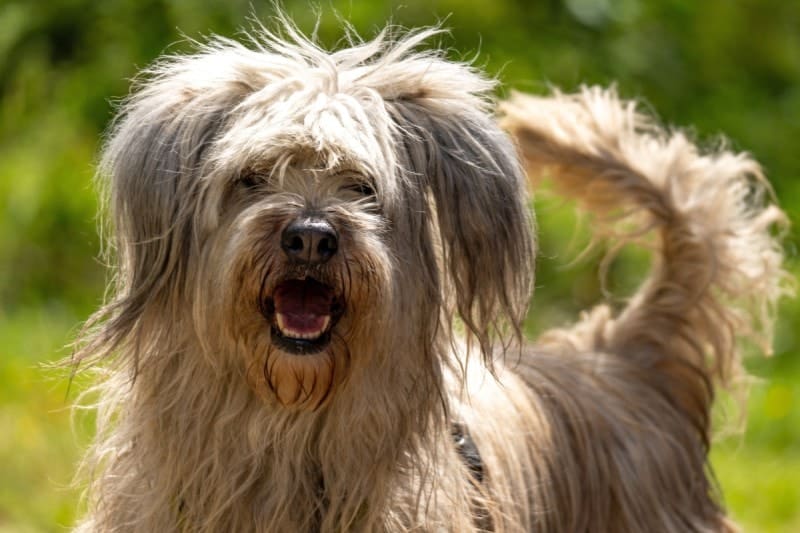
Also called the Cao da Serra de Aires, this shaggy-coated canine may have single or double rear dewclaws. Weekly brushing is key in maintaining his long coat, though be sure to start this grooming routine early in life so he learns to appreciate the bonding time.
Like most working canines, this sheepdog is intelligent and can be a joy to train. The secret sauce of success is exercising him enough beforehand and implementing treats and toys into lessons so things remain fun and fresh. Socializing this pup is also important, as he can be aloof with strangers.
33. Carolina Dog
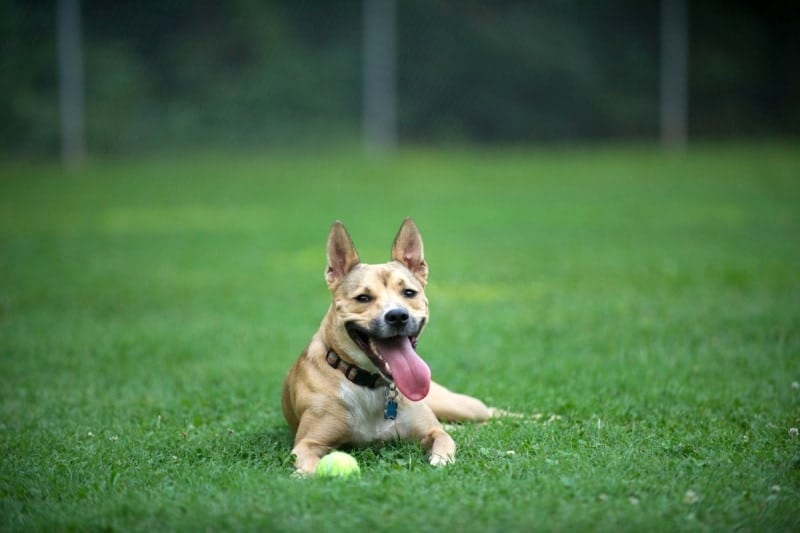
This dingo-lookalike sometimes has rear dewclaws, with a few fur kiddos rocking a double set! A medium-sized pup, he weighs up to 55 pounds and may be one of seven standard shades, including black, buff, and tawny. Coat markings like white, Irish, and piebald may also add a little pizzazz to his pelt.
The Carolina dog is a primitive breed and requires an experienced owner to shape him into a confident canine. He’s naturally wary of strangers and somewhat shy and sensitive, needing plenty of praise during training. Because of his quirks, he’s not the best pick for loud, unpredictable settings, such as city living or families with small kiddos.
34. Croatian Sheepdog

Also called the Croatian shepherd dog, this all-black barker may have single or double rear dewclaws. Resembling a leggier schipperke, he’s an energetic canine companion who loves to work. Sports like agility are right up his alley, along with old-fashioned fun like swimming, hiking, and chasing frisbees. Daily exercise is an absolute must for this perky-eared pup.
Training this rare Rover is on the easier side, given his eager-to-please ways. Still, mixing up training sessions to hold his attention is important. He’s smart and doesn’t do well with repetition. Socialization is essential, too, as he can be reserved with strangers.
35. Swedish Lapphund
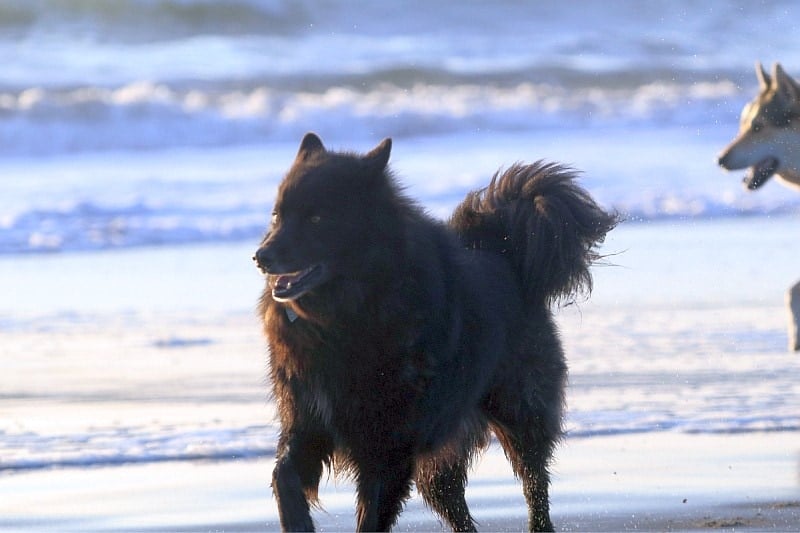
This Swedish meatball’s standard permits rear dewclaws, with the extra toe beans potentially giving him more grip as he romps across snow and ice. He’s a heavy shedder, especially when he blows his famous fur twice yearly. Keep a brush and lint roller handy!
Affectionately referred to as the “Lappie” by breed fanciers, this fur kiddo comes from the Lappland region, part of modern-day Norway, Sweden, Finland, and Russia. He started out doing everything from hunting to guarding and even herding reindeer. He remains a work-minded woofer, demanding a daily job or challenge to test his body and brain. That said, he’s also happy to curl up after a day of fun to unwind.
36. Rafeiro do Alentejo

The breed standard of this big guy permits single and double rear dewclaws. The extra toes may aid when covering spans of rough terrain – an activity this large-and-in-charge doggo will enjoy. He’s a good pick for a hiking buddy, even if you prefer a leisurely pace. He’s happy to lumber along to take in the fresh air and new smells.
Originally for Portugal, he began as a hunting dog before moving on to be a livestock and property guardian, using his size to deter threats along with a deep bark. He gets his name from the Alentejo plains region, where he’d look over large flocks alone for extended periods. Independence is built into this breed, which may complicate training, but he’s still affectionate with those closest to him.
Dogs with DOUBLE Rear Dewclaws

As touched on above, some dogs have double dewclaws on their rear feet. A few even have extra toes on their paws, such as the Norwegian Lundehund. These extra toes can be cute, but be sure to keep them trimmed and check them regularly for signs of injury.
- Anatolian shepherd
- Australian shepherd
- Beauceron
- Bracco Italiano
- Briard
- Carolina dog
- Croatian shepherd dog
- Estrela mountain dog
- Great Pyrenees
- Icelandic sheepdog
- Norwegian buhund
- Norwegian lundehund
- Portuguese sheepdog
- Pyrenean mastiff
- Rafeiro do Alentejo
- Spanish mastiff
Should Rear Dewclaws Be Removed?
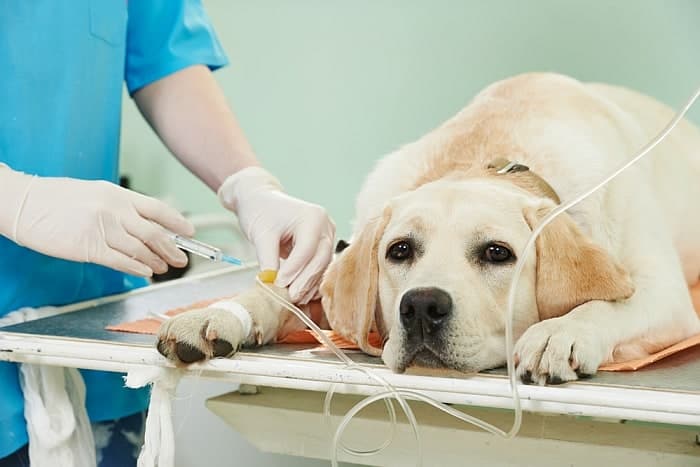
Rear dewclaws are prone to injury and against the breed standard of many dogs, leading some breeders and owners to have them removed.
That said, there is no blanket right or wrong answer regarding dewclaw removal. Some pups venture through life without rear dewclaw disasters, while others are prone to problems.
Dewclaw removal is a relatively uncomplicated procedure in puppies, but it is more difficult in adult doggos, especially if the declaw has already been injured.
So, should you remove your dog’s hind dewclaws? This is a conversation to have with your vet regarding your individual dog’s needs. Every dog’s situation is unique, with the pros and cons varying from pup to pup. It’s always best to seek the advice of the mutt medical professional who knows your canine best.
Dewclaw Maintenance 101

Dewclaws are like the rest of your dog’s nails in many ways, but their oddball location calls for some tweaks to your standard routine to keep your canine comfortable and less susceptible to injury. While you can’t prevent every accident, you can reduce the risk.
When it comes to your dog’s dewclaws, do:
- Perform nail trims: Your doggo’s dewclaws need clipping to prevent them from curling into a hook shape that’s especially prone to snagging and risking injury. Always give them a quick snip or grind during your dog’s regular pupper pedicure.
- Groom your pupper’s paws: Keep the area around your dog’s dewclaws tangle-free and trimmed to prevent painful snags. Shorter hair also makes it easier to spot potential dewclaw injuries.
- Check the area: Periodic, hands-on checks of your dog’s front legs and rear legs allows you to catch issues before they snowball out of control. This is particularly true with dewclaws that may crack or tear without you noticing.
- Address issues promptly: If there is an injury to your dog’s leg or dewclaw, seek veterinary care. Nail injuries are incredibly painful and can affect your dog’s gait, risking further injuries.
- Consider paw protection: Dog booties help protect your dog’s paws from injury. Some even go high enough to cover the dewclaws (including the ones on his back legs!) This can prevent your pup from accidentally catching a dewclaw on brush during hikes or fieldwork.
Breeds with Rear Dewclaws: FAQ
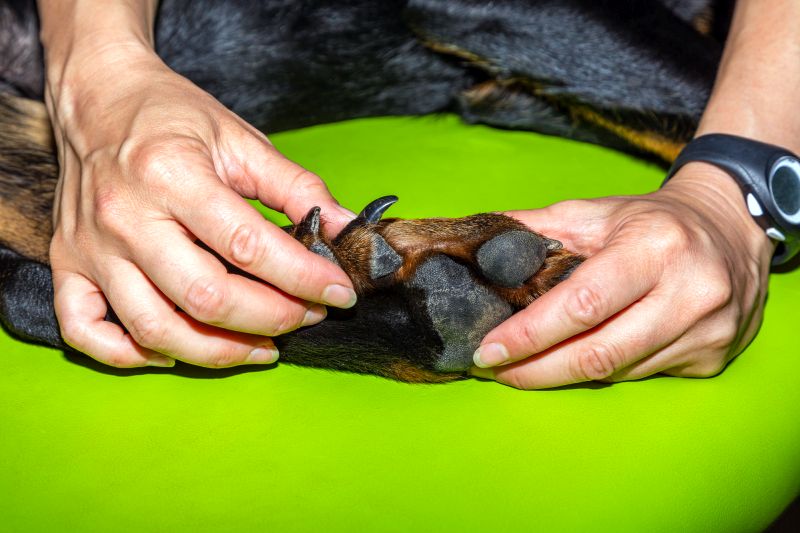
Do you still have questions or concerns about rear dewclaws in doggos? Check out these most commonly asked questions about dogs with rear dewclaws.
What dog breed has a back dewclaw?
Many dog breeds have rear dewclaws. Most tend to be large breeds like the Saint Bernard and Spanish mastiff, but some petite pups have them, too, including the Norwegian lundehund.
How rare are back dewclaws?
Rear dewclaws are somewhat rare in the dog world, but they occur in a decent amount of popular breeds like the German shepherd and golden retriever. Because of this, you’ve likely met a pup with them without realizing it!
Do rear dewclaws require removal?
Rear declaws don’t necessarily require removal, though many breeders and pet parents remove them to lessen the risk of injury or meet the breed standard. Dewclaw injuries can be quite painful, so it’s worth consideration in some cases. The right course of action varies from dog to dog, so contact your vet to discuss what’s best for your barker.
Do rear dewclaws get injured?
Unfortunately, the position of rear dewclaws and lack of connective tissue leave them susceptible to injury. They may catch on blankets, clothes, and brushes during grooming, leading to painful tears, cracks, or complete removal in extreme cases.
Do you have a Rover with rear dewclaws at home? How about a doggo with double dewclaws or a similarly cool critter? Has your dog ever suffered a dewclaw injury? Tell us all about your clawed cutie in the comments!



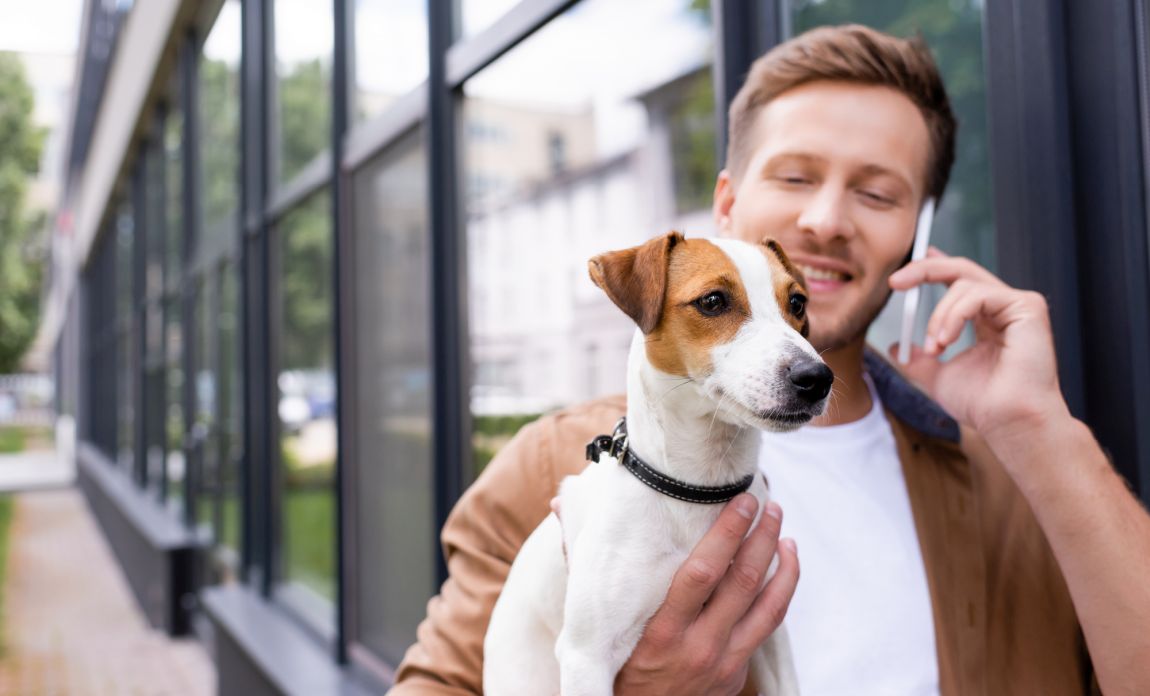


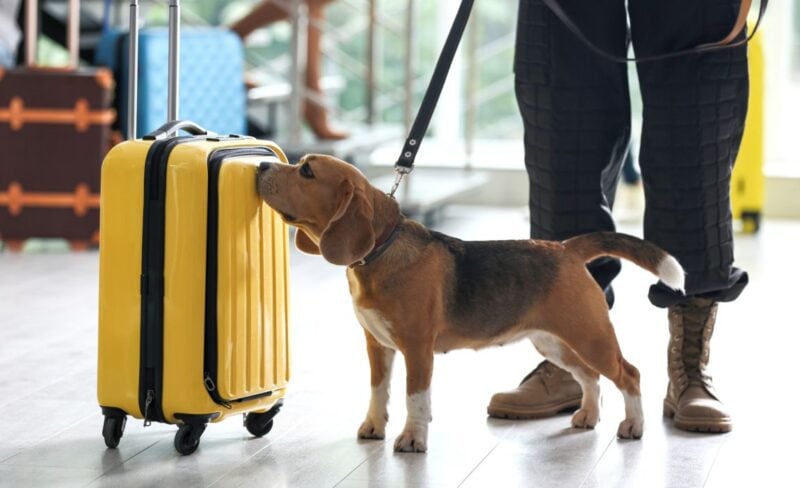
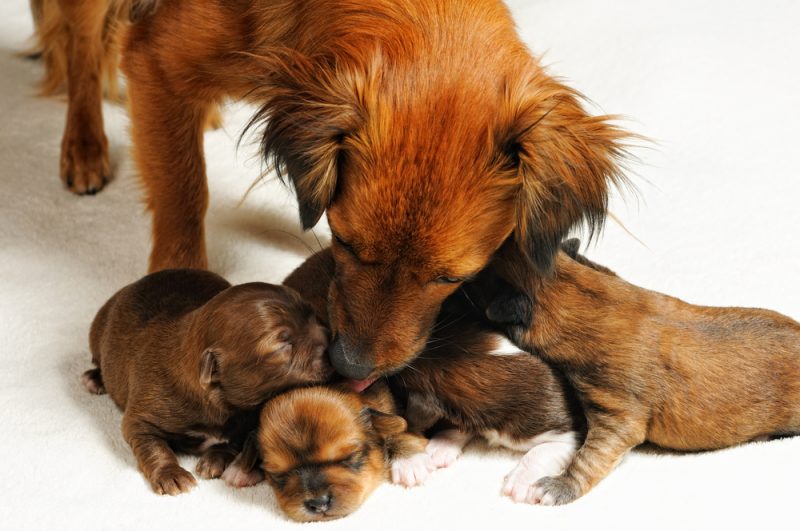
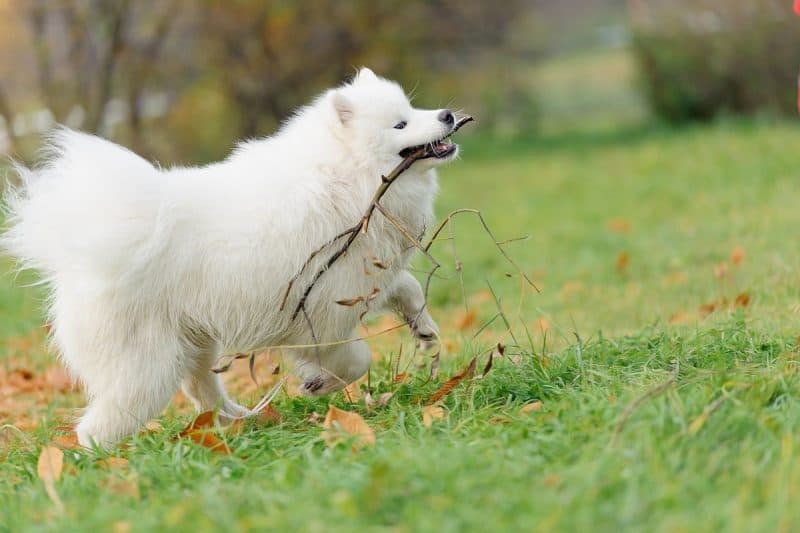
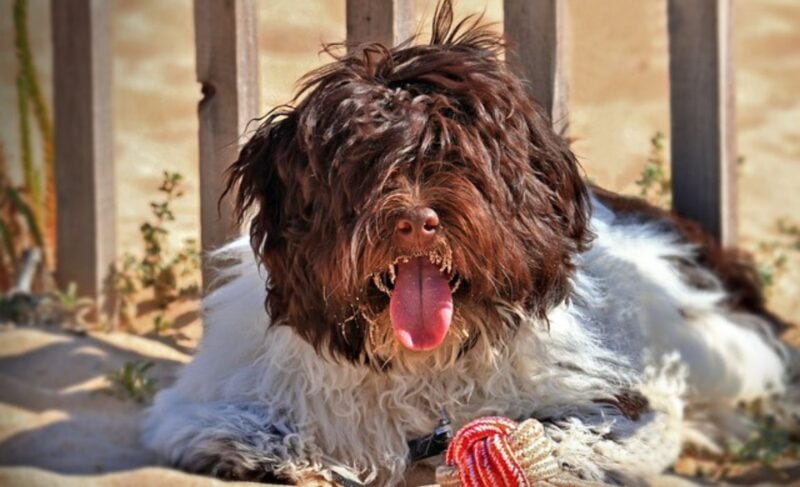
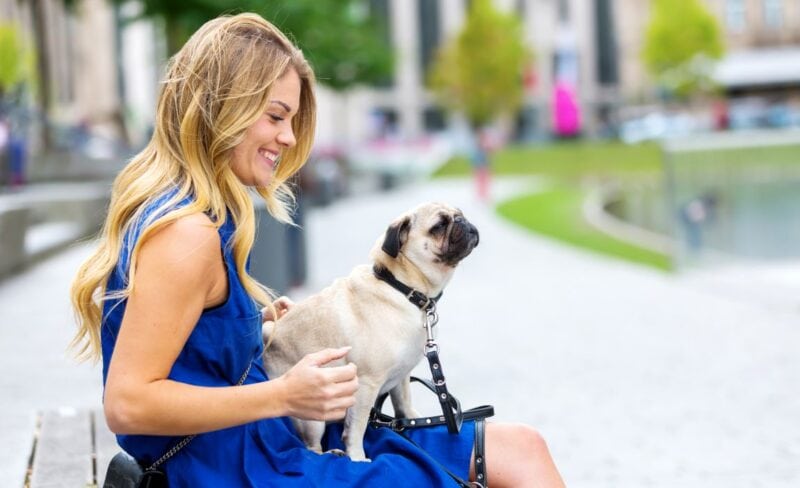
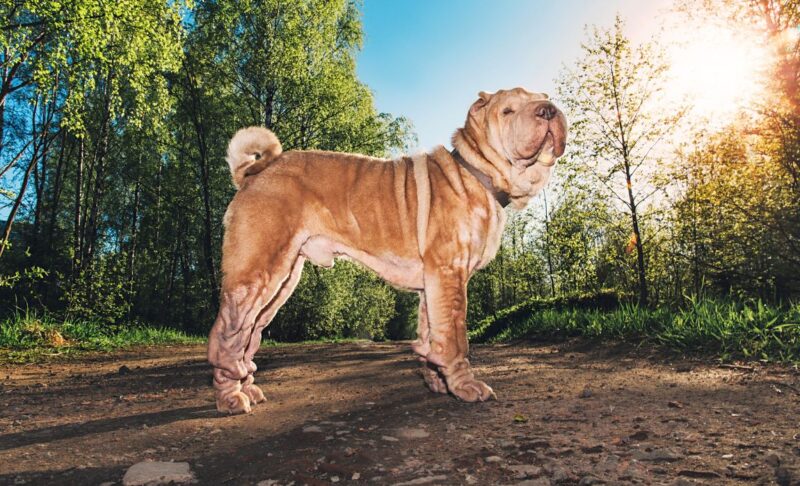
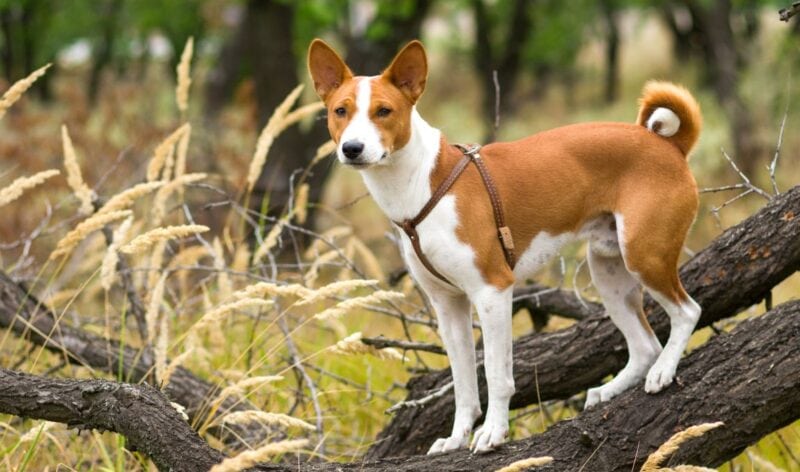

Leave a Comment